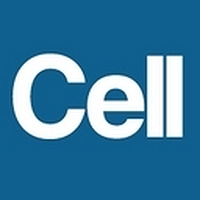 “Hemp (Cannabis sativa L.) is currently one of the most controversial and promising crops. This study compared nine wild hemp (C. sativa spp. spontanea V.) accessions with 13 registered cultivars, eight breeding lines, and one cannabidiol (CBD) hemp strain belonging to C. sativa L.
“Hemp (Cannabis sativa L.) is currently one of the most controversial and promising crops. This study compared nine wild hemp (C. sativa spp. spontanea V.) accessions with 13 registered cultivars, eight breeding lines, and one cannabidiol (CBD) hemp strain belonging to C. sativa L.
The first three groups had similar main essential oil (EO) constituents, but in different concentrations; the CBD hemp had a different EO profile. The concentration of the four major constituents in the industrial hemp lines and wild hemp accessions varied as follows: β-caryophyllene 11-22% and 15.4-29.6%; α-humulene 4.4-7.6% and 5.3-11.9%; caryophyllene oxide 8.6-13.7% and 0.2-31.2%; and humulene epoxide 2, 2.3-5.6% and 1.2-9.5%, respectively.
The concentration of CBD in the EO of wild hemp varied from 6.9 to 52.4% of the total oil while CBD in the EO of the registered cultivars varied from 7.1 to 25%; CBD in the EO of the breeding lines and in the CBD strain varied from 6.4 to 25% and 7.4 to 8.8%, respectively. The concentrations of δ9-tetrahydrocannabinol (THC) in the EO of the three groups of hemp were significantly different, with the highest concentration being 3.5%.
The EO of wild hemp had greater antimicrobial activity compared with the EO of registered cultivars.
This is the first report to show that significant amounts of CBD could be accumulated in the EO of wild and registered cultivars of hemp following hydro-distillation. The amount of CBD in the EO can be greater than that in the EO of the USA strain used for commercial production of CBD. Furthermore, this is among the first reports that show greater antimicrobial activity of the EO of wild hemp vs. the EO of registered cultivars.
The results suggest that wild hemp may offer an excellent opportunity for future breeding and the selection of cultivars with a desirable composition of the EO and possibly CBD-rich EO production.”

 “Background: Little is known about the the acute effects of cannabis on symptoms of OCD in humans. Therefore, this study sought to: 1) examine whether symptoms of OCD are significantly reduced after inhaling cannabis, 2) examine predictors (gender, dose, cannabis constituents, time) of these symptom changes and 3) explore potential long-term consequences of repeatedly using cannabis to self-medicate for OCD symptoms, including changes in dose and baseline symptom severity over time.
“Background: Little is known about the the acute effects of cannabis on symptoms of OCD in humans. Therefore, this study sought to: 1) examine whether symptoms of OCD are significantly reduced after inhaling cannabis, 2) examine predictors (gender, dose, cannabis constituents, time) of these symptom changes and 3) explore potential long-term consequences of repeatedly using cannabis to self-medicate for OCD symptoms, including changes in dose and baseline symptom severity over time. “The purpose of this study was to evaluate the antioxidant and antimicrobial properties of two extracts from a new Chinese accession (G-309) of Cannabis sativa L. (Δ9 -tetrahydrocannabinol <0.2%) with high content of propyl side chain phytocannabinoids.
“The purpose of this study was to evaluate the antioxidant and antimicrobial properties of two extracts from a new Chinese accession (G-309) of Cannabis sativa L. (Δ9 -tetrahydrocannabinol <0.2%) with high content of propyl side chain phytocannabinoids. “Epilepsy is a chronic neurological disease characterized by recurrent epileptic seizures. Studies have shown the complexity of epileptogenesis and ictogenesis, in which immunological processes and epigenetic and structural changes in neuronal tissues have been identified as triggering epilepsy.
“Epilepsy is a chronic neurological disease characterized by recurrent epileptic seizures. Studies have shown the complexity of epileptogenesis and ictogenesis, in which immunological processes and epigenetic and structural changes in neuronal tissues have been identified as triggering epilepsy. “The inflammatory sequence is the first phase of wound healing. Macrophages (MPhs) and mesenchymal stromal cells (MSCs) respond to an inflammatory microenvironment by adapting their functional activity, which polarizes them into the pro-inflammatory phenotypes M1 and MSC1. Prolongation of the inflammatory phase results in the formation of chronic wounds. The endocannabinoid system (ECS) possesses immunomodulatory properties that may impede this cellular phenotypic switch.
“The inflammatory sequence is the first phase of wound healing. Macrophages (MPhs) and mesenchymal stromal cells (MSCs) respond to an inflammatory microenvironment by adapting their functional activity, which polarizes them into the pro-inflammatory phenotypes M1 and MSC1. Prolongation of the inflammatory phase results in the formation of chronic wounds. The endocannabinoid system (ECS) possesses immunomodulatory properties that may impede this cellular phenotypic switch. “Graft versus host disease (GVHD) pathophysiology is a complex interplay between cells that comprise the adaptive and innate arms of the immune system. Effective prophylactic strategies are therefore contingent upon approaches that address contributions from both immune cell compartments.
“Graft versus host disease (GVHD) pathophysiology is a complex interplay between cells that comprise the adaptive and innate arms of the immune system. Effective prophylactic strategies are therefore contingent upon approaches that address contributions from both immune cell compartments. “Cannabinoids have long been used for their psychotropic and possible medical properties of symptom relief. In the past few years, a vast literature shows that cannabinoids are neuroprotective under different pathological situations.
“Cannabinoids have long been used for their psychotropic and possible medical properties of symptom relief. In the past few years, a vast literature shows that cannabinoids are neuroprotective under different pathological situations. “Cannabinoids help in pain treatment through their action on CB1 and CB2 receptors.
“Cannabinoids help in pain treatment through their action on CB1 and CB2 receptors.

 “Anxiety disorders in young people are frequently comorbid with other mental disorders and respond unsatisfactorily to first-line treatment in many cases.
“Anxiety disorders in young people are frequently comorbid with other mental disorders and respond unsatisfactorily to first-line treatment in many cases.